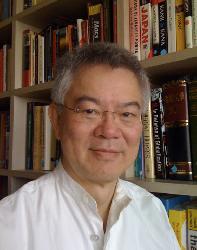
Last Tango in Argentina?
Project Syndicate | Sep 25, 2012
By Sin-ming Shaw
BUENOS AIRES – Argentina and economic crisis, it can sometimes seem, have been conjoined since the country’s birth, like Siamese twins. In fact, Argentina is the only developed country that has succeeded, in the period from World War II until today, in mismanaging its way out of the First World.
But, for all their failings, Argentina’s ruling elites have never been short on “attitude,” viewing their country as the equal of the world’s strongest, and thus never afraid to stand up to them all.
Donald Trump speaks in Indiana
Trumpism: A New Era in World Politics?
Yascha Mounk on the growing instability of liberal democracy – and what Joschka Fischer, Nina Khrushcheva, Bernard-Henri Lévy, and others think should be done about it.
It is fighting words in Buenos Aires, for instance, to suggest that Argentine soccer is not the best in the world, though it has managed to win the World Cup only twice, behind Brazil (five), Italy (four), and Germany (three) – and matched by its tiny neighbor, Uruguay. While many experts, players, and fans rank Brazil’s Pelé as the best soccer player of all time, it is wise not to dispute the local insistence that either Maradona or Lionel Messi, two local boys, is better.
Recently, in a taxi in Hong Kong, of all places, a young tango dancer from Buenos Aires was visibly agitated at his host when Brazilian football was put ahead of his country’s game.
Such bravura, or chutzpah, has enabled current President Cristina Fernández de Kirchner to insist that inflation in Argentina – currently rampaging well above 20% – remains in the single digits. In 2007, Fernández replaced professional statisticians at the National Statistics and Censuses Institute with political appointees when the Institute began to publish inflation rates that were accelerating alarmingly. Ever since, official numbers and reality have parted ways.
Moreover, academic and private-sector economists have been warned that publishing different figures could result in criminal prosecution for spreading false rumors. In fact, one academic was fined $125,000 for publishing inflation figures that were substantially higher than official data indicated.
Of course, when you control the official statistics office, you can claim any inflation rate you want; but that does not lower the price of bread. Anyone who buys food in supermarkets or uses a taxi knows that the true rate of annual inflation over the past several years has been 20-30%. Clearly, the market has reached its own verdict, reflected in the gap between the official exchange rate of 4.6 Argentine pesos to the dollar and the black-market rate, which recently reached 6.8, with some economists whispering that an eight-peso dollar is likely before too long.
Not only has Argentina repudiated the $100 billion in foreign debt on which it defaulted a decade ago; it has also shrugged off criticism of its expropriation in April of the Spanish oil company Repsol. Argentina has offered to compensate the company at “fair” market value, to be determined at some future date – presumably when the floor has dropped out of Repsol’s share price, which initially plunged nearly 60% from its previous high, and is still down 40%.
Even as evidence of economic crisis continues to mount – the latest sign being that supermarket shoppers are limited to one bottle of cooking oil per customer – the government gives no indication of concern. The authorities have defied the International Monetary Fund, defaulted on debts, and proudly proclaimed that Argentina has transcended traditional economics. The government is still “negotiating” with the IMF on how best to collect, measure, and report inflation, as if this were not done routinely by trained statisticians throughout the world.
Argentina’s prideful attitude may have led it to become a second-rate economy, but the same attitude has served it well in its one great and unique contribution to world culture: tango, recognized by UNESCO as part of the world’s “intangible cultural heritage.”
Year after year at the annual World Tango Competition, Argentine dancers dominate the top ranks of Stage Tango, more glamorous and difficult than the other category, Salon Tango. This year was no different. The top three pairs were all from Argentina.
Dancing tango well is not just a matter of technical skill, which can be learned by others. The Japanese are unequaled masters of such skills, and have been competing since the beginning of international tango competitions in 2003. In 2009, a Japanese couple, Hiroshi and Kyoko Yamao, made history by winning the championship in Salon Tango, in which a loving connection between the dancers is more important than a haughty attitude. In Stage Tango, where that attitude is paramount, only once has a Japanese woman, Chizuko Kuwamoto, managed to reach the top – and only by dancing with an Argentine partner.
Juan Fabbri, the owner of Tango Porteno and Esquina Carlos Gardel, the two most expensive and important tango clubs in Buenos Aires, believes that what foreigners (including me, a student of tango for years) are missing is the “El Cachafaz” factor. El Cachafaz was the nickname of a legendary early-twentieth-century dancer – José "Benito" Bianquet. The word, from the ghetto dialect of “lunfardo,” evokes “impudence, danger, manliness, mischief, and shamelessness.”
Mario Morales, a top tango choreographer, who has trained a string of tango champions, put it to me slightly differently. “To dance tango well, you need corazon (heart) and passion. Foreigners are more circumspect. We Argentines put our hearts first and maybe think later.”
That insight arguably provides the best explanation of why Argentina excels at tango – and why it is failing to remain in the First World, where it once belonged.
Related information
This article on publisher's website
Back to home page
